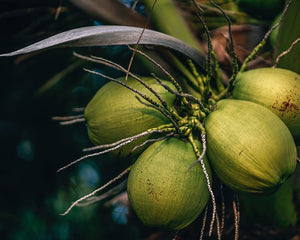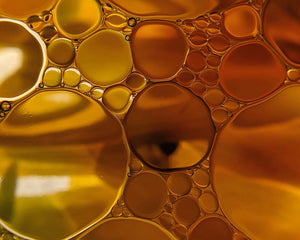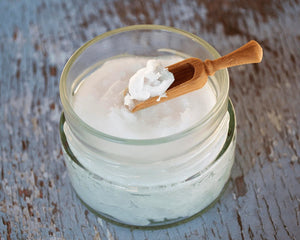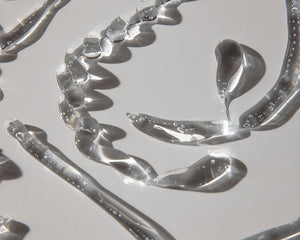
A
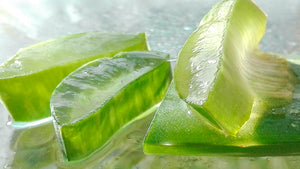
INCI: Aloe Barbadensis Leaf Juice*
What is Aloe Vera?
Aloe Vera is a succulent species widely spread in arid and hot climate zones, believed to originate from the Arabian Peninsula. The gel inside its leaves has been used since ancient times as a soothing treatment for skin conditions such as dermatitis, psoriasis, or sunburn.
Properties of Aloe Vera for the skin
Aloe Vera is mainly characterized by its moisturizing, anti-inflammatory, antibacterial properties, and its ability to heal and regenerate the skin. It has astringent power, and its saponin content helps remove dirt from pores, acting as a natural antiseptic.
(*) Ingredient from controlled organic cultivation.
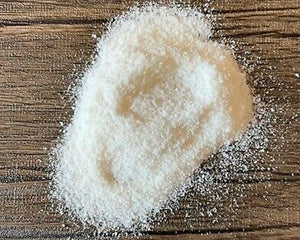
INCI: Ammonium Acryloyldimethyltaurate/VP Copolymer
What is Ammonium Acryloyldimethyltaurate/VP Copolymer?
It’s a polymer used as a thickening and stabilizing agent in cosmetic formulations.
Properties of Ammonium Acryloyldimethyltaurate/VP Copolymer
It improves product texture, allowing for smooth and even application. It also helps stabilize emulsions and increases the viscosity of formulas.
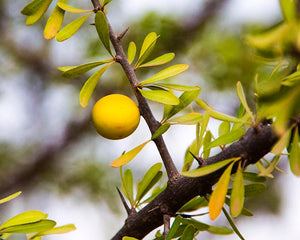
INCI: Argan Oil Polyglyceryl-6 Esters
What is Argan?
Argan, from the Argania Spinosa family, is a spiny tree endemic to Morocco and Algeria. The oil is extracted by manual pressing of its nut-like fruits.
What are Argan Oil Esters?
An ester is an organic compound obtained through a transesterification reaction (or alcoholysis in this case) of argan oil and polyglycerin 6. In transesterification, a triglyceride molecule, which is the main component in oil, reacts with an alcohol to separate water, resulting in fatty acid esters and glycerin.
What are Argan Oil Esters used for?
This type of naturally derived ester has various functions. It can be used as an emollient for the skin, an emulsifier to mix immiscible liquids (such as water and oil), a conditioner to maintain healthy skin, or a surfactant to reduce the surface tension of cosmetics and improve product distribution for a more even application.
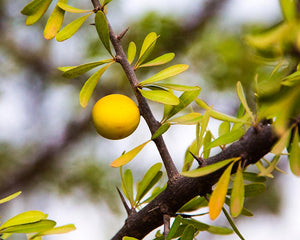
INCI: Argania Spinosa Kernel Oil*
What is Argan?
Argan, from the Argania spinosa family, is a spiny tree endemic to Morocco and Algeria. The oil is extracted by manual pressing of its nut-like fruits.
What is Argan oil used for?
Argan oil is recognized among the Berbers of Morocco for its ability to naturally nourish the skin, improve elasticity, and prevent signs of aging. It is rich in antioxidants, vitamin E, and essential fatty acids. It helps rebalance sebum production in the skin, preventing bacterial proliferation and benefiting acne-prone skin. It can also be used to nourish and add shine to the hair without greasiness.
(*) Ingredient from controlled organic farming.
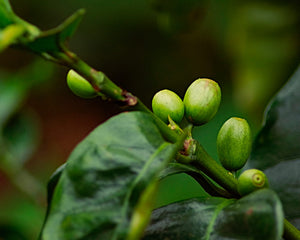
INCI: Coffea Arabica Seed Extract*
Where does Arabica Coffee come from?
Arabica coffee is originally from Ethiopia and later spread throughout the Arab world. The extract is obtained from coffee seeds. It contains omega fatty acids such as linoleic acid, antioxidant polyphenols, phytosterols, and caffeine.
Properties of Arabica Coffee Seed Extract
It stimulates the synthesis of collagen and elastin. Rich in omega-6, it helps hydrate and nourish the skin due to its acid content. It also helps restore the skin's barrier function and has toning properties as it stimulates blood circulation. It is also used for hair care, as it strengthens and stimulates hair growth due to caffeine.
*Ingredient from controlled organic cultivation.
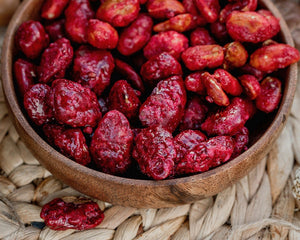
INCI: Euterpe Oleracea Fruit Extract*
What is Açai?
Açaí berry extract comes from the fruit of the açaí tree, native to the Amazon region. These small purple berries are recognized for their high content of antioxidants, amino acids, minerals, and essential fatty acids. Açaí extract is derived from these berries and is widely used in the cosmetics and personal care industry.
Properties of Açaí Berry Extract
Açaí extract has significant beneficial properties for the skin, primarily its antioxidant power. Its richness in omega fatty acids provides hydration and nutrition to the skin, promoting cellular regeneration and improving the appearance and texture of the skin. Additionally, it has anti-inflammatory properties that can soothe irritations and redness of the skin.
(*) Ingredient from controlled organic farming.
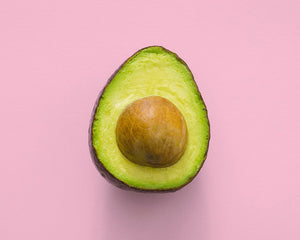
How is ECO Avocado Oil obtained?
Avocado is native to Mexico and Guatemala. Its oil is extracted from the pulp of the fruit from organic cultivation.
Properties of ECO Avocado Oil
This highly nourishing and moisturizing oil has a high penetration capacity into the skin. It is rich in fatty acids, especially oleic acid (70%), followed by palmitic acid (10%) and linoleic acid (8%). It also contains vitamins A, E, and D, proteins, and essential minerals with remarkable antioxidant properties. It has regenerative capacity, stimulates collagen production, and is a good ingredient for treating marks and imperfections, contributing to smoother, brighter, and softer skin. Although it is not a substitute for sunscreen, it helps protect the skin from damage caused by UVA and UVB radiation.
*Ingredient from controlled organic cultivation.
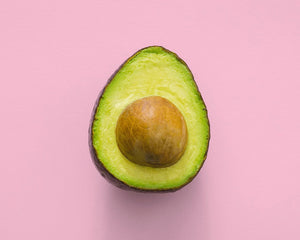
INCI: Persea Gratissima Oil
How Avocado Oil is Obtained
Avocado is originally from Mexico and Guatemala. Its oil is extracted from the fruit pulp.
Properties of Avocado Oil
This highly nutritious and moisturizing oil has a high penetrating capacity into the skin. It is rich in fatty acids, especially oleic acid (70%), followed by palmitic acid (10%) and linoleic acid (8%). It also contains vitamins A, E, and D, proteins, and essential minerals with remarkable antioxidant properties. It has regenerative capacity, stimulates collagen production, and is a good ingredient for treating marks and imperfections, contributing to smoother, brighter, and softer skin. Although it does not replace sunscreen, it helps protect the skin from damage caused by UVA and UVB radiation.
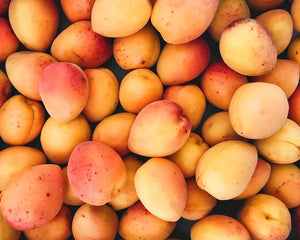
INCI: Prunus Armeniaca Kernel Oil*
Properties of Apricot Kernel Oil
This oil is extracted from dried apricot seeds using cold pressing — a mechanical process that avoids heat to preserve its nutritional properties. Apricot kernel oil is known for its richness in essential fatty acids and vitamin E, making it an excellent moisturizer and nourishing agent for the skin. Additionally, it has antioxidant properties that help protect the skin from damage caused by free radicals.
(*) Ingredient from controlled organic farming
B
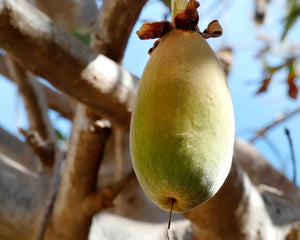
INCI: Adansonia Digitata Seed Oil*
What is Baobab?
Baobab is a tree native to Africa and Australia, also known as the "upside-down" tree due to its branch-like roots.
Skin properties of Baobab oil
Baobab seed oil is a rich source of fatty acids: oleic acid (30-40%), linoleic acid (24-34%), and palmitic acid (18-30%). It has great nourishing properties and the ability to improve skin elasticity while being quickly absorbed.
It contains vitamins A, C, D, E, and K, flavonoids, amino acids, and minerals, all of which are highly beneficial for our skin. Baobab oil has anti-inflammatory properties, making it an optimal ingredient for caring and comforting sensitive skin that is prone to irritation and itching. It is also believed to have benefits for hair care, providing shine and hydration to the hair and repairing split ends.
(*) Ingredient from controlled organic cultivation.
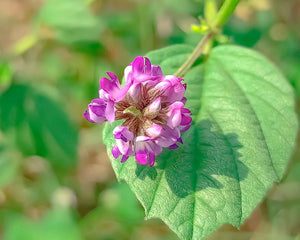
INCI: Bakuchiol
What is Bakuchiol?
Bakuchiol is a natural compound derived from the seeds of a plant native to India, **Psoralea corylifolia**. It is an active ingredient with multiple beneficial properties for the skin, similar to those of retinol, which is why some have referred to it as "plant-based retinol." Its natural origin and safety profile make it a highly interesting ingredient in modern cosmetics.
Among its main properties are antioxidant, anti-inflammatory, and depigmenting actions.
Properties of Bakuchiol
Its antioxidant activity comes from its molecular structure, which allows it to effectively neutralize free radicals. Additionally, it has powerful anti-inflammatory properties that help reduce irritation and redness of the skin. Furthermore, Bakuchiol has been shown to possess depigmenting action, capable of inhibiting melanin production and lightening skin spots. This natural ingredient also has antimicrobial activity, making it useful for combating infections. Finally, Bakuchiol also has rejuvenating effects and improves skin texture, offering benefits similar to those of retinol, but without its potential irritating effects.
If you want to learn more about this active ingredient, you can read this article.
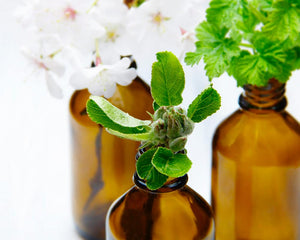
INCI: Benzyl Alcohol
What is Benzyl Alcohol?
Benzyl Alcohol is an aromatic organic compound. It is a component of certain essential oils naturally found in various plants, and can also be obtained from the fermentation of sugar solutions from plants. It is one of the 26 allergens regulated by the EU.
What is Benzyl Alcohol used for?
Benzyl Alcohol can be used as a preservative due to its antiseptic and antimicrobial properties; as a solvent; as a viscosity control agent; and as a fragrance agent. It is well tolerated by the skin and has a low environmental impact.

INCI: Beta-carotene
What is Beta-carotene?
Beta-carotene is a plant pigment belonging to the category of carotenoids; it contributes to the protection of plants thanks to its antioxidant properties and its ability to absorb light. It is a precursor of vitamin A, so it is used by the body for its synthesis.
What is Beta-Carotene used for?
Beta-carotene is the main provitamin A carotenoid. It is used to accelerate cell regeneration and slow down cellular aging processes, especially those activated by sun exposure.
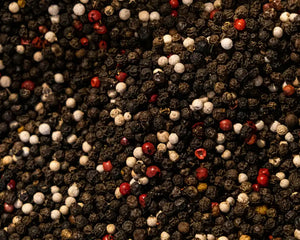
INCI: Beta-Caryophyllene
What is Beta-Caryophyllene?
Beta-Caryophyllene is a terpene found in various plants, such as clove and black pepper.
Properties of Beta-Caryophyllene
It is known for its anti-inflammatory and analgesic properties, acting as a modulator of the endocannabinoid system. Additionally, it has been studied for its potential to reduce pain and anxiety, as well as for its antioxidant effects.
(**) Derived from natural essential oils

What is Beta-Sitosterol?
Beta-Sitosterol belongs to the group of phytosterols and is a plant-derived fatty acid found in fruits, vegetables, nuts, and seeds.
What is Beta-Sitosterol used for?
As a moisturizer and anti-inflammatory agent, Beta-Sitosterol is used as a skin conditioner and can also perform other functions such as stabilizing an emulsion or masking the background odor of a formula.
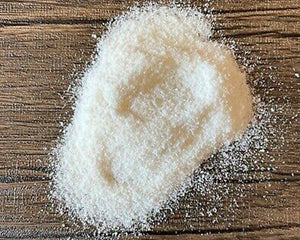
INCI: Biosaccharide Gum-1
What is Biosaccharide Gum-1?
Biosaccharide Gum-1 is a natural polysaccharide derived from the fermentation of certain sugars. It is used as a cosmetic ingredient for its moisturizing and film-forming properties.
Properties of Biosaccharide Gum-1
It creates a protective barrier on the skin, which can help prevent water loss and protect it from external aggressors. It improves the texture of products, providing a silky and pleasant feel to the touch. It also helps stabilize emulsions and enhances the consistency of cosmetic products.

INCI: Bisabolol
What is Bisabolol?
Bisabolol is a natural compound found in chamomile essential oil.
Properties of Bisabolol
It’s well-known for its soothing and anti-inflammatory properties, making it a popular ingredient in cosmetic and dermatological products. It’s commonly used to help reduce irritation and redness, providing a comforting sensation to the skin.
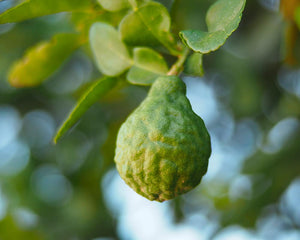
INCI: Citrus Bergamia Peel Oil Expressed
What is Bergamot Oil?
Originating from Southeast Asia, the fruit of the bergamot is similar to a lemon but larger. Its essential oil is extracted from the glands contained in the epicarps of the fruit.
Properties of Bergamot Oil
It is used as a fragrance agent. It has a refreshing and enveloping aroma with a slight citrus scent.
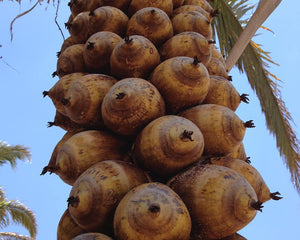
INCI: Orbignya Oleifera Seed Oil*
What is Babasú or Babassu?
Babassu oil is extracted from the seeds of the babassu palm, which is native to the Amazon rainforest region. The palm tree can live up to 200 years and bears fruit for the first time after 8-10 years.
Properties of Babassu Oil
This oil is a super-emollient with an ultra-light texture and rapid absorption. Thanks to its texturizing properties, it provides softness without greasiness, with a very natural finish. It removes impurities and keeps the skin clean. Due to its anti-inflammatory properties, it is a good remedy for itching and irritations.
(*Ingredient from controlled organic cultivation)
C
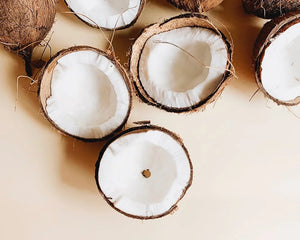
INCI: C10 18 Triglycerides
What is C10-18 Triglycerides?
C10-18 Triglycerides is a blend of triglycerides derived from medium to long-chain fatty acids (containing between 10 and 18 carbons), commonly sourced from vegetable oils such as coconut or sunflower oil. It is widely used in cosmetics due to its mild, stable profile and excellent tolerance by all skin types.
Properties of C10-18 Triglycerides
This ingredient acts as an emollient and skin conditioning agent, providing softness and improving the texture of the final product. It helps retain moisture, leaving the skin nourished without a greasy feel. It also functions as a structuring agent, giving consistency to emulsions and balms. Thanks to its plant origin and good skin compatibility, it is a common choice in natural and vegan cosmetics.

INCI: Caffeine
What is Caffeine?
Caffeine is a natural compound found in various plants, such as coffee, tea, and yerba mate. In the cosmetic field, it is primarily used for its stimulating and antioxidant properties. It is present in products such as creams, serums, and gels, especially in those aimed at alleviating signs of fatigue and improving the appearance of the skin.
Properties of Caffeine
Caffeine can help reduce inflammation and redness of the skin, making it ideal for products intended for sensitive or irritated skin. It helps improve blood circulation in the skin, which can contribute to a healthier and more radiant appearance. Caffeine is known for its ability to decrease swelling and dark circles, making it a popular ingredient in eye contour products. It combats free radicals, helping to prevent cellular damage and premature skin aging. It also contributes to smoother and firmer skin, thanks to its ability to improve elasticity.

INCI: Calendula Officinalis Flower Extract*
What is Calendula or Marigold?
Calendula is an aromatic herbaceous plant of Mediterranean origin, known for its therapeutic benefits. It has been used in traditional medicine by ancient Greeks, Arabs, Chinese traditional medicine, and Ayurveda.
Properties of Calendula
Calendula extract is recognized for its anti-inflammatory and soothing properties. It promotes skin healing and cellular regeneration by acting on the metabolism of glycoproteins and collagen fibers.
*Ingredient from controlled organic cultivation.
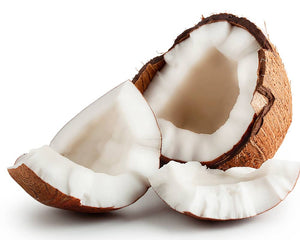
INCI: Caprylic/Capric Triglyceride
What is Caprylic/Capric Triglyceride?
Caprylic/Capric Triglyceride is a naturally derived ingredient widely used in cosmetics. Chemically, it is a glycerin triester derived from coconut oil.
Properties of Caprylic/Capric Triglyceride
It is primarily used for its emollient properties; it creates a lipid film on the skin, preventing water loss and dehydration. Additionally, it provides a smooth and silky finish to the touch. It is completely safe and does not cause any skin sensitivity.
Caprylic/Capric Triglyceride is a glycerin triester derived from coconut oil, primarily used for its emollient properties.
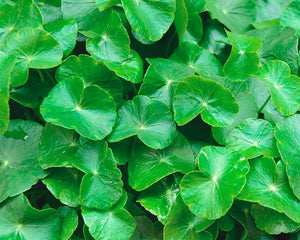
INCI: Centella Asiatica Extract*
What is Centella Asiatica?
Centella Asiatica is an herbaceous plant used as a medicinal herb in traditional Chinese and Indian medicine for its healing, analgesic, and antimicrobial properties, among others. It is also known as "tiger herb" because legend says that Bengal tigers used to lick its leaves to imbue their saliva with the juice of centella, and then lick their wounds to heal them.
Properties of Centella Asiatica
It is a powerful cellular regenerator and stimulator of collagen synthesis, thanks to asiaticoside, one of its main components. This terpenoid promotes skin epithelialization, improves the appearance of acne marks and scars, and promotes circulation. It also has antioxidant and moisturizing properties.
*Ingredient from controlled organic cultivation.
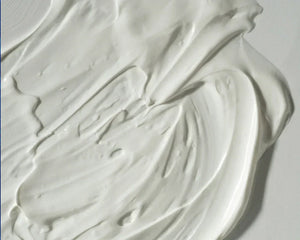
INCI: Ceramide III
What is Ceramide III?
Ceramide III is an essential lipid belonging to the ceramide family, crucial for skin health. It occurs naturally in the epidermis and contributes to the formation of the skin barrier, helping to maintain hydration and protect against external irritants.
Properties of Ceramide III
Like other ceramides such as Glucosyl Ceramide, Ceramide III helps retain moisture but focuses more on barrier formation, reducing water loss and complementing the moisturizing action of Glucosyl Ceramide.
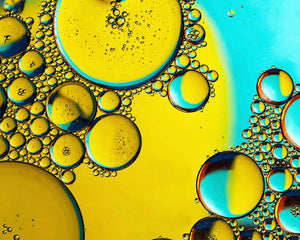
What is Cetearyl Alcohol?
Cetearyl Alcohol is a fatty alcohol, a combination of cetyl alcohol and stearyl alcohol, which occur naturally in plants and animals. These fatty alcohols are commonly derived from vegetable oils such as coconut, corn, or soybean oil. The properties of Cetearyl Alcohol are completely different from those of low molecular weight or drying alcohols, such as denatured alcohol.
What is Cetearyl Alcohol used for?
It is a very common ingredient used for its emollient properties, but also as a stabilizer for oil and water mixtures (emulsions). It does not dry out or irritate the skin at all.
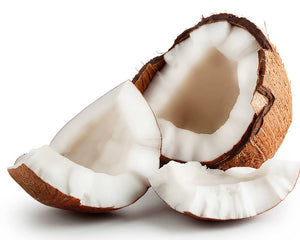
INCI: Cetyl alcohol
What is Cetyl Alcohol
Cetyl alcohol is a long-chain fatty alcohol that is primarily obtained from plant sources, such as oil, and is widely used in the cosmetic industry.
Properties of Cetyl Alcohol
Cetyl alcohol acts as an emollient, providing hydration and softness to both skin and hair by creating a barrier that retains moisture. Additionally, it functions as a stabilizer, helping to keep emulsions together and preventing ingredient separation, which is essential in creams and lotions. It also acts as a thickener, increasing the viscosity of formulations and improving the texture and application of products such as creams and conditioners.

INCI: Chamomilla Recutita Flower Extract*
How is Chamomile Flower Extract obtained?
Chamomilla recutita, one of the most popular chamomile species, is a plant native to western Europe and northern Asia. The extract is obtained from the flower heads exposed to high pressures and temperatures through steam distillation.
Properties of Chamomile
Chamomile flower extract has anti-inflammatory and soothing properties for the skin thanks to its content of the terpenoids chamazulene and bisabolol. Thanks to its ability to inhibit the cyclooxygenase enzyme, it helps relieve itching and redness. It also has antioxidant activity due to the presence of matricin, apigenin, and luteolin.
*Ingredient from controlled organic cultivation.
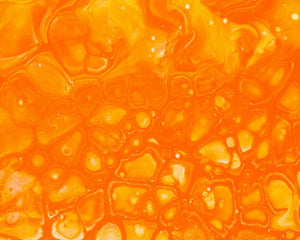
INCI: CI15985
What is CI15985?
CI 15985, also known as Yellow 6 / Yellow 6 Lake, is a synthetic dye used to give orange and yellow tones to beauty and personal care products.
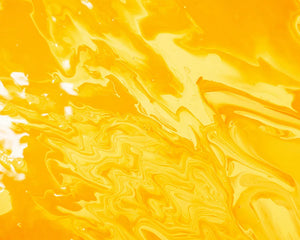
INCI: CI 19140
What is CI 19140?
CI 19140, also known as Yellow 5 or Tartrazine, is a synthetic colorant widely used in cosmetics to provide a bright yellow hue to products.

INCI: CI 42090
What is CI 42090?
CI 42090, also known as Blue 1 or Brilliant Blue FCF, is a synthetic colorant used to add an intense blue shade to cosmetic products.

What is Citral?
It is one of the most common ingredients in fragrances. With a slight lemon scent, it is a natural compound found generally in essential oils such as lemon or orange.
What is Citral used for?
Citral is a fresh perfuming ingredient rich in vitamins. It belongs to the list of 26 ingredients that due to their potential allergenicity must be specifically mentioned in the INCI.
**Derived from natural essential oils.

What is Citric Acid?
Citric acid is a natural component that is extracted from plants, often from lemon juice.
What is Citric Acid used for?
Citric acid can be used in various ways. It is commonly used in very small amounts to regulate the pH of a formula and bring it closer to the skin's natural pH. It is also the alpha-hydroxy acid (AHA) with the highest molecular weight and can be used as an exfoliant, similar to glycolic acid or lactic acid. It helps improve the texture of the skin by removing dead cells and enhancing the skin's barrier function.

What is Citronellol?
Citronellol is one of the most common natural ingredients found in fragrances, with a slight rose-like scent. It is a monoterpene that is generally found in essential oils such as geranium or rose oil.
What is Citronellol used for?
This fragrance ingredient belongs to the list of 26 ingredients that, due to their potential allergenicity, must be specifically mentioned in the INCI. It is also attributed with anti-aging properties.
**Derived from natural essential oils.

INCI: Citrus Aurantium Peel Oil
What is Citrus Aurantium Peel Oil?
Citrus Aurantium Peel Oil is a natural extract obtained by cold pressing the orange peel. It is known for its citrusy, sweet, and refreshing aroma, as well as its numerous benefits for health, wellness, and cosmetics.
Properties of Citrus Aurantium Peel Oil
It acts as a skin care agent, keeping the skin in good condition by nourishing, hydrating, and protecting it. It stimulates blood and lymphatic circulation, promoting collagen production for a more youthful appearance. Additionally, it enhances the fragrance of cosmetic products, making them more pleasant to the senses.
(**) Derived from natural essential oils
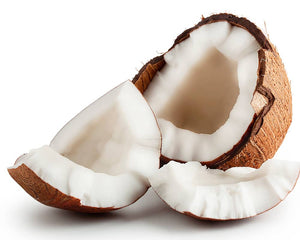
What is Coco-Caprylate/Caprate?
It is a natural ingredient derived from coconut oil.
Properties of Coco-Caprylate/Caprate
It is an ester used for its emollient properties and its characteristic very soft but dry feel. Completely safe, it is highly biocompatible with the skin.
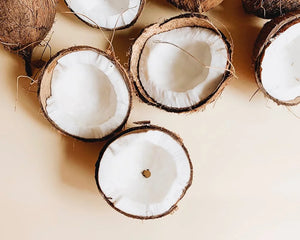
INCI: Coco-Glucoside
What is Coco-Glucoside?
Coco-glucoside is a mild, non-ionic surfactant derived from coconut oil and plant sugars like glucose. It’s widely used in natural cosmetics for its gentleness and excellent tolerance on sensitive skin.
Properties of Coco-Glucoside
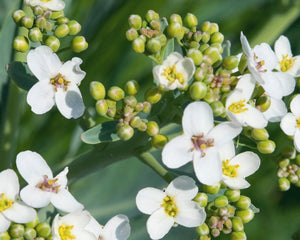
INCI: Crambe Abyssinica seed oil
What is Crambe?
Abyssinian oil is a vegetable oil extracted from the seeds of the Crambe abyssinica plant, native to ancient Abyssinia, now Ethiopia. Crambe oil is obtained through a cold-pressing process of the seeds, preserving its natural properties.
Properties of Abyssinian or Crambe Oil:
Crambe oil is widely used in the cosmetics and personal care industry due to its excellent emollient, occlusive, and conditioning properties for the skin. Additionally, it has notable antioxidant activity that helps protect the skin against premature aging and presents regenerative and nourishing properties, providing hydration and softness to the skin and hair. Due to its high content of Omega 6 and 9 fatty acids, Crambe oil also has a smoothing effect and improves the skin barrier.

INCI: Daucus carota sativa root extract*
How is Carrot Extract obtained?
This well-known vegetable belongs to the Apiaceae family.
Properties of Carrot Extract
Carrot extract, derived from the roots of the plant, is an oily extract used in cosmetics for its richness in carotenes, vitamin B6, and C. It has antioxidant properties and is also attributed with a certain regenerating capacity of the skin. In small concentrations, it can be used as an orange pigment to color cosmetic formulas naturally.
*Ingredient from controlled organic cultivation.

INCI: Zea Mays Starch
Properties of Corn Starch
Zea Mays starch, commonly known as corn starch, is a carbohydrate widely used in the cosmetic industry. It has emollient and thickening properties, making it ideal for improving the texture of products like creams and lotions. Additionally, it has absorbent qualities that help control moisture in formulations and provide a smooth, soft feel on the skin.
D
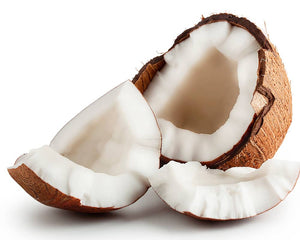
INCI: Decyl Glucoside
What is Decyl Glucoside?
Decyl Glucoside is a non-ionic surfactant derived from natural sources, primarily coconut oil and glucose. It is known for being gentle on the skin and eyes, making it suitable for products intended for sensitive skin.
Properties of Decyl Glucoside
It helps remove impurities, grease, and dirt from the skin and hair, acting as an excellent cleansing agent. It can improve the stability of formulations. It is biodegradable and considered more environmentally friendly compared to synthetic surfactants.
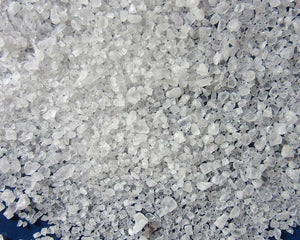
What is Dehydroacetic Acid?
Dehydroacetic Acid is a preservative commonly used in natural cosmetic products. It is approved by natural cosmetic certifiers Ecocert and Cosmos.
What is Dehydroacetic Acid used for?
It helps products last longer by preventing the proliferation of fungi, and to a lesser extent, bacteria.

INCI: Dimethyl Phenethyl Acetate**
What is Dimethyl Phenethyl Acetate?
Dimethyl Phenethyl Acetate is an ester mainly used as a fragrance in cosmetic products. It can be found in certain essential oils.
Properties of Dimethyl Phenethyl Acetate
Besides adding fragrance, it can work as an emollient, helping to soften the skin and improve the texture of formulations.
(**) Derived from natural essential oils
E

INCI: Eugenol**
What is Eugenol?
It is one of the most common natural ingredients found in fragrances, with a slight scent of exotic spice. It is generally found in basil, clove, or cinnamon oil.
What is Eugenol used for?
Eugenol is a perfuming ingredient that belongs to the list of 26 ingredients that, due to their potential allergenicity, must be specifically mentioned in the INCI. It is also attributed with antioxidant, antibacterial, and analgesic properties.
(**) Derived from natural essential oils.
F

INCI: Farnesol**
What is Farnesol?
Farnesol is a natural alcohol found in essential oils from plants such as rose, neroli, citronella, and sandalwood. It is primarily used in cosmetics for its soft, floral fragrance as well as its beneficial properties for the skin.
Properties of Farnesol
Farnesol has antibacterial properties that help inhibit odor-causing bacteria, making it commonly used in natural deodorants. It also acts as a sebum regulator, which makes it useful in formulations for oily or acne-prone skin. Additionally, its gentle floral scent makes it an excellent fragrance fixative and enhancer in cosmetic products. While well tolerated at low concentrations, it may cause irritation on sensitive skin if overused.
(**) Derived from natural essential oils
G
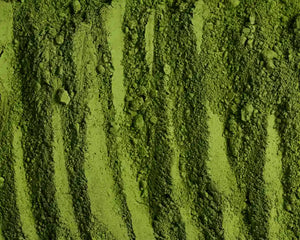
INCI: Camelia sinensis Leaf Extract*
What is Green Tea Extract?
Green tea extract comes from the Camellia sinensis plant and is rich in polyphenols. It’s widely used in skincare for its powerful antioxidant and anti-inflammatory properties, helping to protect, soothe, and revitalize the skin.
Properties of Green Tea Extract
A potent antioxidant, it helps neutralize free radicals and prevent premature aging. Its soothing and anti-inflammatory action makes it ideal for sensitive, reactive, or redness-prone skin. It can also help balance sebum production and improve overall skin texture and appearance.
(*) Ingredient from certified organic farming

INCI: Geraniol**
What is Geraniol?
EGeraniol is one of the most common natural ingredients found in fragrances, with a slight rose-like scent. It is typically found in essential oils of rose, geranium, lemon, and various others.
What is Geraniol used for?
This perfuming ingredient belongs to the list of 26 ingredients that, due to their potential allergenicity, must be specifically mentioned in the INCI.
(**) Derived from natural essential oils.

INCI: Geranyl Acetate**
What is Geranyl Acetate?
Geranyl acetate is an ester found in various essential oils, such as rose oil and citronella oil. It has a floral and fruity aroma.
Properties of Geranyl Acetate
It is used in perfumery and cosmetics for its fragrant properties. Additionally, it has anti-inflammatory and antimicrobial benefits, making it useful in skincare products.
(**) Derived from natural essential oils

INCI: Ginkgo Biloba Leaf Extract*
What is Ginkgo?
Known as Ginkgo or Gingko, it is a tree native to Asia and is among the oldest species in the world, with fossils dating back to the Jurassic era. Its use in Chinese medicine dates back more than 5,000 years to treat everything from dementia to asthma or bronchitis; it was attributed with anti-inflammatory properties as well as stimulating blood circulation. Its extract is produced from the leaves, which are so characteristic due to their particular fan-like shape.
Properties of Ginkgo
Ginkgo contains antioxidant phytochemicals such as flavonoids, polyphenols, and terpenes, which are capable of attacking free radicals more effectively than other powerful actives such as beta-carotene or vitamin E. Additionally, it reinforces moisture retention in the skin.
*Ingredient from controlled organic cultivation.
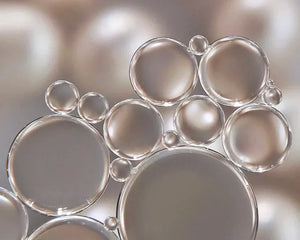
INCI: Glucosyl Ceramide
What is Glucosyl Ceramide?
Glucosyl Ceramide is a lipid formed by the combination of a ceramide molecule with a glucose molecule. It is essential for skin health as it is naturally found in the epidermis and plays a key role in hydration and protecting the skin barrier, enhancing its overall function.
Properties of Glucosyl Ceramide
Glucosyl Ceramide has moisturizing properties that help retain skin moisture, improving its appearance and texture. It also strengthens the skin barrier, preventing water loss and protecting against environmental irritants. Its function is similar to Ceramide III, focusing mainly on hydration, while Ceramide III specializes in reinforcing the barrier, providing additional and complementary protection for healthier skin.
NOTE: The effect of Glucosyl Ceramide may be more gradual compared to traditional ceramides because it converts into active ceramide. This makes it particularly beneficial for formulations aiming for a gentler, longer-lasting action, making it an ideal choice for sensitive or irritation-prone skin.
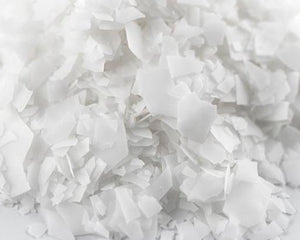
INCI: Glyceryl Caprylate
What is Glyceryl Caprylate?
Glyceryl caprylate is a plant-derived humectant and moisturizer. It is a monoester obtained by the reaction of glycerin with caprylic acid.
This ingredient is commonly used as an emulsifier in O/W (oil in water) and W/O (water in oil) emulsions.
Properties of Glyceryl Caprylate
Glyceryl caprylate is widely used as an emulsifier in a variety of cosmetic formulations. Its chemical structure allows it to effectively reduce the surface tension between the oily phase and the aqueous phase of emulsions, improving solubility and stability. Glyceryl caprylate also provides moisturizing and conditioning effects to the products it is included in, thereby benefiting the health and appearance of the skin. It is very well tolerated by the skin, with high skin compatibility.
It possesses antimicrobial properties. It is often used in combination with glyceryl undecylenate to achieve a broad-spectrum antimicrobial effect.
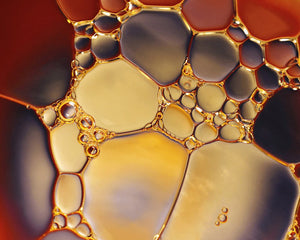
What is Glyceryl Dibehenate?
Glyceryl Dibehenate is a vegetable-derived ester derived from glycerin and two molecules of behenic acid. It is certified by Ecocert.
What is Glyceryl Dibehenate used for?
It is used as an emollient and gelling agent and as an emulsion stabilizer. It is non-comedogenic and does not clog pores.
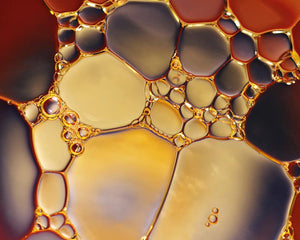
INCI: Glyceryl stearate citrate
What is Glyceryl stearate citrate?
Very similar to the commonly used glyceryl stearate, it is an anionic emulsifier and emollient for oil-in-water emulsions, hydrophilic, and without PEG (Polyethylene glycol). The main difference with glyceryl stearate is that it has a molecule of citric acid also attached to its glycerin.
What is Glyceryl stearate citrate used for?
It is very suitable for emulsions with a slightly acidic pH value or emulsions with UV filters. It provides a smooth and silky appearance on the skin. It can also be used on sensitive skin.
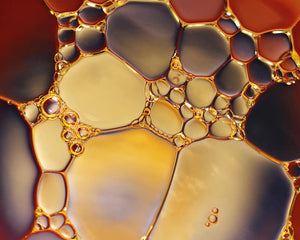
INCI: Glyceryl Stearate
What is Glyceryl Stearate?
Glyceryl Stearate is derived from the combination of glycerin and a fatty acid called stearic acid. It is obtained from most vegetable oils through an environmentally friendly process. It is naturally present in our body.
Properties of Glyceryl Stearate
It is used as an emollient to leave the skin soft and smooth, and as an emulsifier to blend water and oils, giving body to the formula.
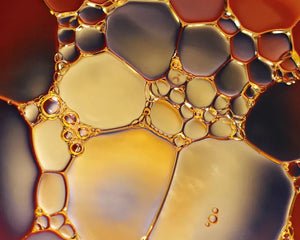
INCI: Glyceryl Stearate SE
What is Glyceryl Stearate SE?
Glyceryl Stearate SE is derived from the combination of glycerin and a fatty acid called stearic acid. It is obtained from most vegetable oils through an environmentally friendly process and is also naturally present in the human body.
Properties of Glyceryl Stearate SE
It works as an emollient, leaving the skin soft and smooth, and as an emulsifier, helping blend water and oils while giving body and consistency to cosmetic formulas.
Difference between Glyceryl Stearate and Glyceryl Stearate SE
Glyceryl Stearate acts as an emulsifier but is not self-emulsifying. Glyceryl Stearate SE, on the other hand, is self-emulsifying and helps create a smooth, creamy texture. Meanwhile, Glyceryl Stearate Citrate also offers antioxidant properties.
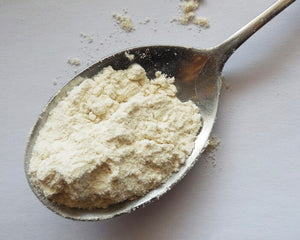
INCI: Glyceryl Undecylenate
What is Glyceryl Undecylenate?
It is an ester of glycerin with undecylenic acid, which can be derived from glycerin from castor oil and rapeseed. It is an emulsifying and antimicrobial agent.
Properties of Glyceryl Undecylenate
It acts as a skin conditioning agent that hydrates and seals in moisture. Of natural origin, it can be found in many natural skincare products.
As an emulsifier, it facilitates the mixing of immiscible liquids by modifying the interfacial tension. As an antimicrobial, it is often combined with glyceryl caprylate; together they present significant antimicrobial and antifungal action.
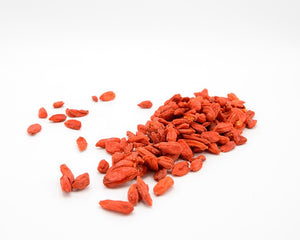
INCI: Lycium Barbarum Fruit Extract*
What is Goji?
Goji berries are the fruit of the Lycium barbarum or Lycium chinense, two species of boxthorn (Lycium) from the Solanaceae family. They are native to Asia and have long been used in traditional Chinese and Tibetan medicine to improve health and longevity.
Properties of Goji berries
Goji berries are rich in macronutrients and micronutrients, earning them the category of super-energizing and antioxidant. Their significant antioxidant action is due to their natural content of vitamin C, beta-carotene, flavonoids like quercetin, and carotenoids like zeaxanthin, which protects against blue light. Goji is capable of capturing superoxide radicals, inhibiting the oxidation of skin lipids and enzymes expressed in the cellular aging process. It also helps restore collagen levels and increase its synthesis. Goji berries stimulate the immune system by increasing the vital energy of cells to perform their metabolic functions.
Ingredient from controlled organic cultivation.
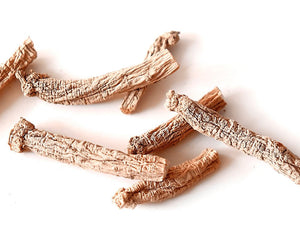
INCI: Panax Ginseng Root Extract
What is Ginseng?
Ginseng is a herbaceous plant native to the Russian Far East, northeastern China, and the Korean Peninsula, and it always grows in certain high-altitude areas. Its root has been traditionally used in Chinese medicine to treat a multitude of ailments.
Properties of Ginseng:
Ginseng root contains numerous bioactive compounds such as saponins, polysaccharides, pectin, vitamins B1, B2, B12, pantothenic acid, and minerals, which help increase oxygenation and circulation of skin cells. It is attributed with hydrating and anti-inflammatory properties, improving skin texture and tone, and contributing to the reduction of wrinkles by restoring the natural firmness of the skin.

INCI: Vitis Vinifera Seed Oil*
How is Grape Seed Oil obtained?
Grape Seed Oil is extracted by pressing the seeds.
Properties of Grape Seed Oil
Grape Seed Oil is an emollient and antioxidant ingredient rich in vitamins, polyphenols, and tannins. It is attributed with anti-aging power due to its richness in procyanidin, an active with greater antioxidant efficacy than vitamin C, and its reparative fatty acids of the skin barrier. It has astringent properties as it contains lecithin capable of regulating sebum production; therefore, it is especially indicated for the treatment of oily skin with acne tendency.
(*) Ingredient from controlled organic cultivation
H
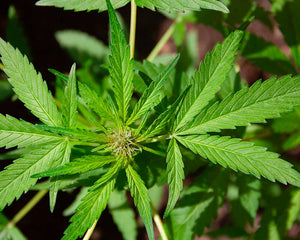
INCI: Cannabis Sativa Seed Oil*
What is Hemp?
Hemp is the common name for the Cannabis plant. Its use dates back to 4000 BC in China, where it was used as a natural remedy for health due to its medicinal and nutritional properties. The oil is extracted from the seeds of the plant and, although it comes from the same family as marijuana, it does not have any toxic or psychoactive effects as it does not contain THC.
What is THC?
Tetrahydrocannabinol or THC is the main psychoactive compound in the Cannabis plant, capable of altering the mind and behavior by causing neurons to release dopamine. Hemp seed oil does not contain THC.
What is CBD?
El Cannabidiol o CBD es uno de los compuestos de la planta de Cannabis; es un analgésico y antinflamatorio; aporta propiedades relajantes y calmantes que reducen la ansiedad y mejoran el estado de ánimo.
Hemp seed oil is a powerful emollient with calming and anti-inflammatory properties. It contains a variety of omega-3 fatty acids that help balance oily skin, providing hydration without clogging pores. It also contains omega-6, gamma-linolenic acid (GLA), which helps reinforce the skin's barrier function and promote cellular regeneration. Additionally, thanks to its high content of cannabidiol (CBD, 10%), it can modulate the immune system's response to imbalances that can result in itching, irritation, or other types of inflammation such as psoriasis or atopic dermatitis.
También se puede utilizar el aceite de semillas de cáñamo en el cabello. Hidrata el cuero cabelludo mientras nutre, aporta brillo y mejora la elasticidad del cabello.
*Ingredient from controlled organic cultivation.
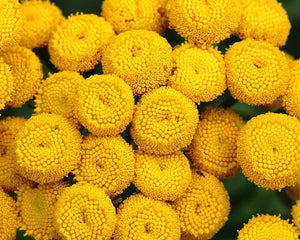
INCI: Helichrysum Stoechas Flower Extract*
What is Helichrysum or Everlasting Flower?
Helichrysum is a plant species in the asteraceae family native to the Mediterranean region. Its flowers, with their characteristic golden yellow color, have always been a symbol of eternity. Once harvested, they can be preserved for a long time, giving the impression of never drying out.
Properties of Helichrysum or Everlasting Flower
The extract of Helichrysum flower is known for its anti-aging action. Its richness in flavonoids and acetophenones with great antioxidant power helps to strengthen our skin and protect it from sun damage and the impact of time. It is a powerful repairer and regenerator of skin cells, as well as calming for the most reactive skin. Additionally, it has antimicrobial properties with purifying action.
*Ingredient from controlled organic cultivation.

INCI: Hexamethylindanopyran**
What is Hexamethylindanopyran?
Hexamethylindanopyran is an organic compound mainly used in the fragrance and cosmetics industry to add scent and enhance the sensory experience of products.
Properties of Hexamethylindanopyran
It’s valued for its warm, woody scent, which brings depth and character to fragrances.
(**) Derived from natural essential oils

INCI: Hibiscus Sabdariffa Flower Extract*
What is Hibiscus?
Hibiscus is a shrub in the mallow family, native to East Asia, mainly China and India.
Properties of Hibiscus
Hibiscus flower extract has a high content of antioxidants, especially myricetin, a flavonoid capable of blocking collagenase, an enzyme responsible for collagen degradation. It also serves to inhibit elastase, an enzyme responsible for the breakdown of elastin. Thanks to this joint action, hibiscus is attributed with firming effectiveness and anti-aging benefits. The extract of this flower also contains alpha-hydroxy acids (AHA), natural exfoliants capable of removing the outer layer of dead skin cells from the epidermis and promoting its renewal, providing brightness. Additionally, it is rich in Vitamin C, which thanks to its antioxidant power helps us control and reduce hyperpigmentation and achieve a more uniform tone and texture.

INCI: Hibiscus Sabdariffa Flower Extract*
What is Hibiscus?
Hibiscus is a shrub in the mallow family, native to East Asia, mainly China and India.
Properties of Hibiscus
Hibiscus flower extract has a high content of antioxidants, especially myricetin, a flavonoid capable of blocking collagenase, an enzyme responsible for collagen degradation. It also serves to inhibit elastase, an enzyme responsible for the breakdown of elastin. Thanks to this joint action, hibiscus is attributed with firming effectiveness and anti-aging benefits. The extract of this flower also contains alpha-hydroxy acids (AHA), natural exfoliants capable of removing the outer layer of dead skin cells from the epidermis and promoting its renewal, providing brightness. Additionally, it is rich in Vitamin C, which thanks to its antioxidant power helps us control and reduce hyperpigmentation and achieve a more uniform tone and texture.
*Ingredient from controlled organic cultivation.

INCI: Hydrolyzed Sodium Hyaluronate
What is Hydrolyzed Sodium Hyaluronate?
Hydrolyzed Sodium Hyaluronate is a modified form of hyaluronic acid, a naturally occurring substance in the skin known for its moisturizing properties. It is obtained through a hydrolysis process that breaks down the larger hyaluronic acid molecules into smaller fragments, resulting in a lower molecular weight. This allows the hydrolyzed sodium hyaluronate to penetrate deeper into the skin.
Properties of Hydrolyzed Sodium Hyaluronate
Hydrolyzed Sodium Hyaluronate has a very low molecular weight (up to 10-20 kDa), which enables it to penetrate the skin's deeper layers more effectively. It has been found to repair and regenerate skin cells, increase hydration, and target signs of aging from within the skin. Additionally, it has the ability to stimulate the production of hyaluronic acid that naturally occurs in the skin.
I
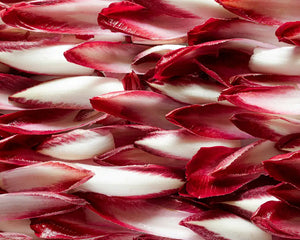
INCI: Inulin
What is Inulin?
Inulin is a natural polysaccharide mainly extracted from plants like chicory and agave. In skincare, it’s used for its prebiotic properties, helping maintain the balance of the skin’s microbiota and promoting healthy skin.
Properties of Inulin
Inulin helps balance the skin’s microbiome by supporting the natural microorganisms that protect its ecosystem. It encourages the growth of healthy flora while limiting the proliferation of agents that can harm skin integrity. Additionally, it acts as a natural moisturizer by retaining moisture, improving hydration, softness, and texture.
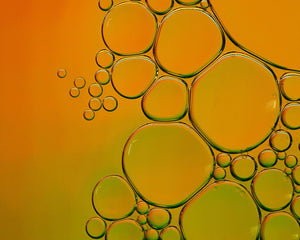
What is Isoamyl Laurate?
Isoamyl Laurate is a fatty acid ester resulting from the reaction between isoamyl alcohol and lauric acid. It is a natural ingredient approved by Ecocert.
What is Isoamyl Laurate used for?
SIt is considered as a natural alternative to silicone, known for its sensory properties and ability to create a velvety touch. Additionally, it helps protect the skin and reduce moisture loss.
J
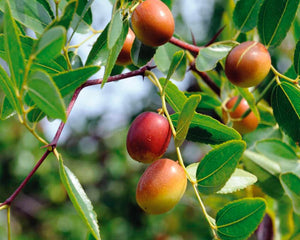
INCI: Jojoba Esters
What are Jojoba Esters?
Jojoba is a shrub native to North America, and its wax esters serve the plant to form a protective barrier on the leaves.
What are Jojoba Esters used for?
Jojoba esters provide hydration and non-greasy emollience, with a very soft and pleasant feel that is easily absorbed into the skin.
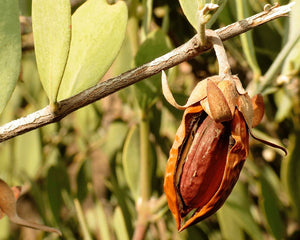
INCI: Simmondsia Chinensis Seed Oil*
What is Jojoba?
Jojoba is a shrub native to North America. Its oil, which is extracted from the seeds, is quite unique because it is not actually an oil but a wax ester. An oil is a triglyceride, which means it is a molecule of glycerin + 3 fatty acids attached to it. This structure easily breaks down through hydrolysis. On the other hand, a wax ester is a long molecule composed of a fatty acid + a fatty alcohol. Wax esters are designed to form a protective and moisturizing barrier, for example, on plant leaves to protect them.
Properties of Jojoba Oil
Jojoba oil, being the most similar to human sebum (both are wax esters), blends with it and forms a thin, non-greasy, and semi-occlusive layer. This layer is then absorbed into the skin and diffuses into the intercellular spaces, making the skin softer and more flexible. It has anti-inflammatory and regenerative properties and helps alleviate dryness, flakiness, and itching while regulating the skin's oil levels.
(*) Ingrediente de cultivo ecológico controlado
L
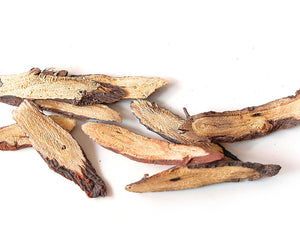
INCI: Glycyrrhiza Glabra Root Extract*
How is Licorice extract obtained?
Licorice extract is derived from the root of the licorice plant, which is a legume native to the Mediterranean, Middle East, and central and southern Russia.
Properties of Licorice
Licorice extract has been used in cosmetics for its various benefits for the skin. It has skin brightening properties due to the presence of glabridin, which can inhibit pigmentation caused by UVB rays. It is a potent anti-inflammatory and has soothing properties, making it effective in treating skin issues such as atopic dermatitis, rosacea, or eczema. It also has antioxidant activity. Overall, it is considered a top ingredient in skincare.
*Ingredient from controlled organic cultivation.
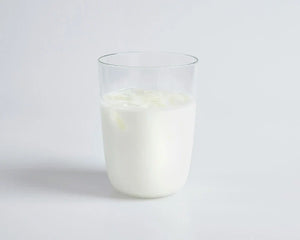
INCI: Lactic Acid
What is Lactic Acid?
Lactic acid is a naturally derived alpha hydroxy acid (AHA) found in milk and other fermented foods. In skincare, it’s prized for its gentle exfoliating power, improving skin texture and promoting cell renewal. It’s especially great for sensitive or dehydrated skin.
Properties of Lactic Acid
It works as a mild exfoliant, removing dead skin cells to reveal a brighter, more even complexion. It also helps boost skin hydration, strengthen the barrier function, and stimulate collagen production. Perfect for those seeking effective exfoliation without irritation.

INCI: Lactobionic Acid
What is Lactobionic Acid?
This polyhydroxy acid (PHA) is an organic acid obtained from lactose. It is a natural compound derived from plant and dairy sources. This acid is produced through a controlled oxidation process of lactose.
Properties of Lactobionic Acid
Lactobionic acid is a polyhydroxy acid (PHA) used in cosmetics for its hydrating and antioxidant action. Its exfoliating properties help remove dead skin cells, gently improving skin texture and tone. Additionally, it has moisturizing and hydrating effects, providing radiance and softness to the skin. Its antioxidant activity makes it a highly interesting anti-aging ingredient. At higher concentrations, lactobionic acid has brightening properties that can help reduce spots and uneven pigmentation.

What is Levulinic Acid?
Levulinic Acid is a versatile substance with several industrial uses. In cosmetics, it is used as a 100% natural preservative obtained from the degradation of cellulose, mainly from corn.
What is Levulinic Acid used for?
Levulinic Acid helps to condition and soften the skin, although its main function is to act as a mild preservative. With good antibacterial properties, it does not alter the structure or pH of other ingredients in the product.
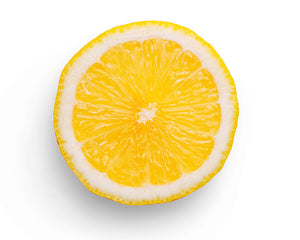
INCI: Limonene**
What is Limonene?
Limonene is one of the most common fragrance ingredients with a slight lemon scent. This natural compound is typically found in essential oils.
What is Limonene used for?
As a popular perfuming ingredient, it belongs to the list of 26 ingredients that, due to their potential allergenicity, must be specifically mentioned in the INCI.
(**) Derived from natural essential oils.
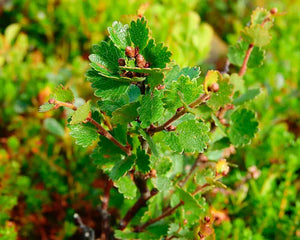
What is Linalool?
Linalool is a common ingredient found in fragrances, known for its gentle floral aroma with woody notes. It is a terpene, a natural compound found in many aromatic plants and flowers, ranging from mint, citrus, laurel, cinnamon, to birch.
What is Linalool used for?
Linalool is a perfuming ingredient that belongs to the list of 26 ingredients that must be specifically mentioned in the INCI due to its potential allergenicity.
(**) Derived from natural essential oils.
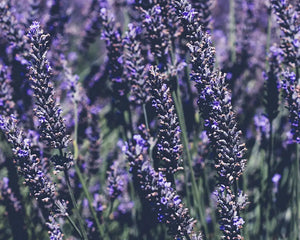
INCI: Linalyl Acetate**
What is Linalyl Acetate?
Linalyl acetate is an ester found in various essential oils, such as lavender, and is known for its floral scent.
Properties of Linalyl Acetate
It has relaxing properties and can help soothe the skin. It also offers anti-inflammatory effects that help reduce irritation.
(**) Derived from natural essential oils
M
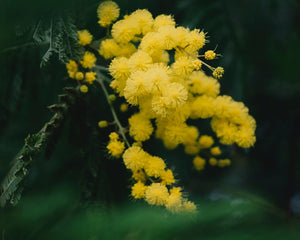
INCI: Acacia Decurrens flower wax
What is Mimosa Flower Wax?
Mimosa is a tree native to Australia, introduced to Europe during the 20th century. It is well-known for its highly fragrant yellow flowers. Acacia decurrens is one of the many types of mimosa. Both the essence and wax are extracted from its flowers; the wax can be used to vary the viscosity of formulas and for its moisturizing properties. The wax is often used alongside sunflower and jojoba waxes, as they contribute to improving texture in terms of viscosity and emollient properties.
Properties of Mimosa Flower Wax
It is attributed with protective, reparative, and moisturizing actions.
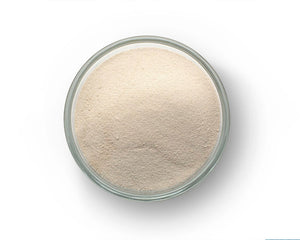
INCI: Magnesium Aluminum Silicate
What is Magnesium Aluminum Silicate?
It is a natural mineral commonly used in cosmetic products, primarily as a thickening, stabilizing, and texturizing agent.
Properties of Magnesium Aluminum Silicate
It is a versatile ingredient that enhances the texture and stability of cosmetic products, in addition to offering specific benefits for different skin types.

INCI: Maltodextrin
What is Maltodextrin?
Maltodextrin is a polysaccharide obtained from starch, usually from corn, rice, or potatoes, through a hydrolysis process. In the cosmetic field, it is used as a thickener and stabilizer.
Properties of Maltodextrin
Maltodextrin attracts and retains moisture in the skin, keeping it hydrated. It provides a smooth and silky feel when applying products to the skin, in addition to helping improve the absorption of other ingredients. It also helps protect the skin from damage caused by free radicals.
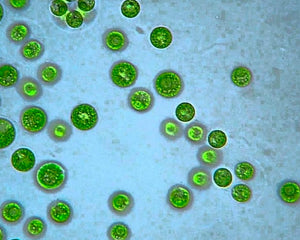
INCI: Mannitol
What is Mannitol?
Mannitol is an organic compound that is naturally found in some fruits and vegetables. Algae and certain types of fungi are rich in this compound.
Properties of Mannitol
Mannitol is a multifunctional cosmetic ingredient that provides hydration, softness, and antioxidant properties. In the cosmetic industry, it is primarily used as a humectant, emollient, and texturizing agent. Its ability to attract and retain moisture makes it a valuable ingredient in formulations for skin and hair.
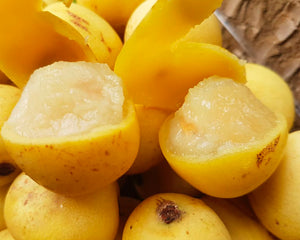
INCI: Sclerocarya Birrea Seed Oil*
What is Marula?
Marula is a tree native to South Africa, and its fruits yield one of the oils with the highest concentration of antioxidants - nearly 60% more than the average cosmetic oils.
Properties of Marula Oil
Marula oil is nourishing and moisturizing due to its high content of fatty acids, such as oleic acid (73%), palmitic acid (15%), and linoleic acid (9%). It is an effective emollient and skin softener, but above all, it is a powerful antioxidant with regenerative and healing properties. It contains amino acids, phenolic compounds, and tocopherols, and helps stimulate collagen production and maintain elastic and firm skin. In body treatments, it is used to reduce the visibility of marks and stretch marks.
(*) Ingredient from controlled organic cultivation.
N
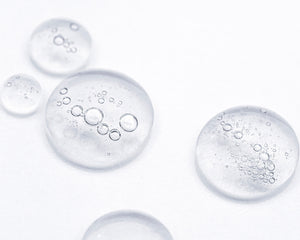
INCI: Niacinamide
What is Niacinamide?
Niacinamide, also known as vitamin B3, is an organic compound derived from niacin. It is a naturally occurring ingredient found in foods such as legumes, meats, fish, and dairy products. Niacinamide is widely used in the field of cosmetics and dermatology for its multiple benefits for the skin.
Properties of Niacinamide
Niacinamide has excellent moisturizing properties that help maintain the skin's hydration levels. Additionally, it has a normalizing effect on sebum production, making it an ideal ingredient for oily or acne-prone skin. It also has anti-inflammatory and antioxidant properties, contributing to calming the skin and protecting it from premature aging. Studies have shown that this active ingredient can inhibit melanin transfer, helping to reduce spots and even out skin tone.
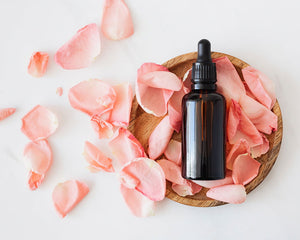
INCI: Parfum**
What type of fragrance is used?
A fragrance of natural origin derived from a blend of essential oils, vegetable oils, and floral waters.
The list of ingredients is not usually broken down, but potential allergens it may contain are disclosed.
(**) Derived from natural essential oils.
O
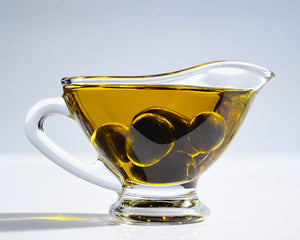
INCI: Olea Europaea Fruit Oil*
How is Olive Oil obtained?
Nothing new to tell about this hyper-known ingredient originating from the Mediterranean region. The oil is obtained by cold pressing olives.
Properties of Olive Oil
It is an oil rich in fatty acids and triglycerides; it protects the skin while nourishing and moisturizing it, reducing transepidermal water loss and improving elasticity. It is one of the best vegetable sources of squalene, an emollient identical to that of the skin. It is also a powerful antioxidant as it contains polyphenols, tocopherol, and carotenoids.
(*) Ingredient from controlled organic cultivation. responder de nuevo buscar en la web y preguntar a GPT-4 Indicación GPT-4
P

INCI: Polyglyceryl-3 Dicitrate/Stearate
What is Polyglyceryl-3 Dicitrate/Stearate?
It is an ester of a polymer of 3 glycerin molecules (polyglycerin) with a mixture of citric acid and stearic acid.
Properties of Polyglyceryl-3 Dicitrate/Stearate
It is generally used as an emulsifying agent to mix liquids with different surface tensions - water and oils. Additionally, it has emollient and moisturizing properties.
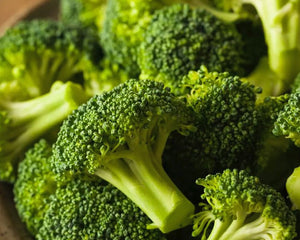
INCI: Panthenol
What is Panthenol?
Panthenol, also known as provitamin B5 (pantothenic acid), is a compound widely used in cosmetic and personal care products. It can be found in various natural sources, such as whole grains and vegetables (like broccoli and spinach). It can also be produced through fermentation processes from natural sugars.
Properties of Panthenol
Panthenol or provitamin B5 offers multiple benefits for both skin and hair. Its moisturizing ability allows it to attract and retain moisture, resulting in deep and long-lasting hydration. Additionally, its anti-inflammatory properties help soothe irritation and redness, promoting smoother and healthier skin. In hair, panthenol improves texture, increasing softness and manageability while strengthening hair structure and reducing breakage. For these reasons, it is a highly valued ingredient in the development of cosmetic and personal care products.

INCI: Pentylene Glycol
What is Pentylene Glycol?
Pentylene Glycol is a multifunctional 100% vegetable-based auxiliary ingredient that is manufactured from sustainable and renewable raw materials such as corn or sugarcane.
Properties of Pentylene Glycol
Pentylene Glycol is a humectant that is used as a stabilizer in emulsions. It also acts as a solvent and broad-spectrum antimicrobial agent, working in synergy with preservatives.
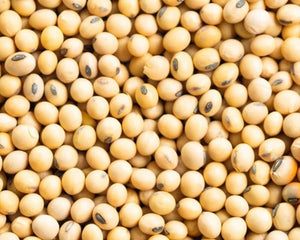
INCI: Phosphatidylcholine
What is Phosphatidylcholine?
Phosphatidylcholine is a phospholipid that is naturally found in cell membranes and is a key component of lecithin. In cosmetics, it is used as an emulsifier and stabilizer due to its ability to help mix oil and water-based ingredients.
Properties of Phosphatidylcholine
Phosphatidylcholine helps maintain skin hydration by forming a barrier that reduces water loss. As an emollient, it provides a smooth and silky feel to the skin, enhancing the texture of cosmetic products. It is also used to stabilize emulsions, acting as an effective emulsifier, allowing water and oil-based ingredients to blend uniformly. It improves the penetration of active ingredients, enhancing their effectiveness. Finally, being a natural component of cell membranes, it may contribute to cellular regeneration and improve the overall appearance of the skin.

INCI: Phytic Acid
What is Phytic Acid?
Phytic acid is a natural compound found in whole grains, seeds, nuts, and some vegetables.
Properties of Phytic Acid
Phytic acid is an increasingly used ingredient in cosmetics. It has antioxidant properties. It is used as a chelator to block harmful heavy metals for the skin. Additionally, phytic acid also has antimicrobial and anti-inflammatory actions, making it an interesting ingredient for the care of sensitive skin.

INCI: Pinene**
What is Pinene?
Pinene is a terpene found in many conifer trees and aromatic herbs, known for its fresh, herbal scent.
Properties of Pinene
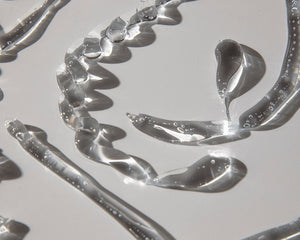
INCI: Polyglyceryl-3 Distearate
What is Polyglyceryl-3 Distearate?
Polyglyceryl-3 distearate is a diester of methylglucose and stearic acid. It is a natural, non-ionic emulsifier of vegetable origin.
What is Polyglyceryl-3 Distearate used for?
As a PEG-free emulsifier, it is suitable for both oil-based and water-based products. It promotes the formation of internal mixtures between non-miscible liquids by modifying the interfacial tension, thus preventing the separation of its components. It also functions as an emollient, contributing to smoother and softer skin.
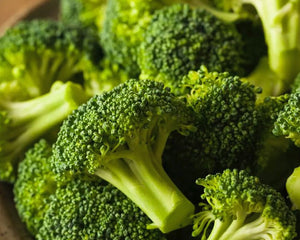
INCI: Polysorbate-80
What is Polysorbate-80?
Polysorbate-80 is a non-ionic surfactant used to emulsify and stabilize formulations, allowing ingredients that would normally not mix—such as water and oil—to blend evenly. Its ability to reduce surface tension makes it a valuable ingredient in products like creams, lotions, and shampoos. It comes from sorbitol, which is a sugar alcohol naturally found in various fruits and vegetables.
Properties of Polysorbate-80
Polysorbate-80 has humectant properties that help the skin retain moisture, contributing to long-lasting hydration.
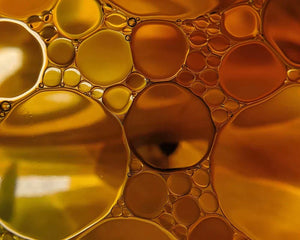
INCI: Potassium Cetyl Phosphate
What is Potassium Cetyl Phosphate?
Potassium cetyl phosphate is a potassium salt of a fatty alcohol that functions as an emulsifier and stabilizer in cosmetic formulations.
Properties of Potassium Cetyl Phosphate
It helps create stable emulsions, improving the texture and application of creams and lotions. It also provides a soft, silky feel on the skin, making it a popular ingredient in skincare products.
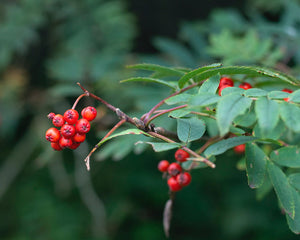
INCI: Potassium Sorbate
What is Potassium Sorbate?
Potassium sorbate is the potassium salt of sorbic acid, which is found in some fruits, and is used in both food and cosmetics to preserve products.
What is Potassium Sorbate used for?
It is a mild preservative that works together with other similarly acting ingredients to provide a broader spectrum of protection. Upon contact with water, it releases sorbic acid, which contributes to preventing cosmetics from spoiling by inhibiting the proliferation of fungi and yeasts. It is harmless, skin-compatible, and has a low environmental impact.
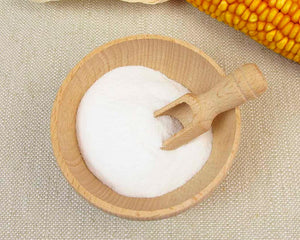
What is Propanediol?
Propanediol is a 100% natural ingredient that is used as a natural alternative to propylene glycol. It is derived from corn sugar.
Properties of Propanediol
Propanediol has multiple uses in cosmetics. It is used to improve skin hydration and the sensory experience of cosmetic formulas. It also acts as a solvent to control viscosity and can enhance the efficacy of preservatives.

INCI: Punica Granatum Seed Oil*
What is Pomegranate?
With well-known properties since ancient times, pomegranate oil is a true anti-aging miracle. It comes from the seeds of the pomegranate, and it takes about 7 kg of seeds to obtain 1 kg of oil.
Properties of Pomegranate Oil
Among the many vegetable oils that exist, pomegranate oil is quite unique. Its main characteristic is the high concentration (60%) of omega-5 or punicalic acid, an uncommon fatty acid. It also contains other more common fatty acids such as linoleic acid (2-10%) and oleic acid (3-12%). Omega-5 activates and protects the physiological functions of the skin. Thanks to its high antioxidant and regenerative power, it helps combat oxidative stress, pollution, and sun damage. Its reparative and anti-inflammatory properties make it ideal for soothing even the most delicate skin. It is also used for scalp and hair care to reduce hair loss, strengthen the hair, and add shine.
(*) Ingredient from controlled organic cultivation.
R

INCI: Beetroot Red*
What is Beetroot?
Beetroot is the outermost part of the root of the beet plant, which is an herbaceous species belonging to the Betoideae subfamily of the Amaranthaceae family.
What is Beetroot used for?
It is primarily used to naturally enhance the color of cosmetic products.
*Ingredient from controlled organic cultivation.
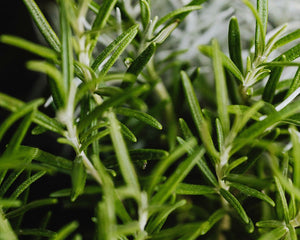
INCI: Rosmarinus Officinalis Leaf Extract*
What is Rosemary?
Rosemary extract is obtained from the dried leaves and flowers of the rosemary plant (Rosmarinus officinalis), an aromatic herb native to the Mediterranean region. This plant has been traditionally used in medicine and cooking for its multiple beneficial properties.
Properties of Rosemary Extract
It has notable antioxidant properties that help protect the skin from oxidative stress and premature aging. Its stimulating and toning effects improve blood circulation and provide radiance to the complexion. Additionally, rosemary extract has antimicrobial and antiseptic activity, making it an agent of interest for the care of skin with imperfections or acne-prone tendencies. Moreover, its herbaceous and refreshing fragrance offers a pleasant sensory experience.
(*) Ingredient from controlled organic farming
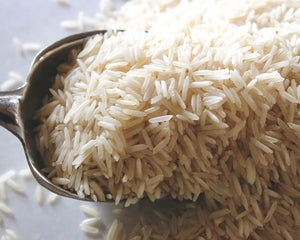
INCI: Oryza sativa Extract
What is Rice Extract?
Rice extract is obtained from the grains or bran of the Oryza sativa plant. It’s a natural ingredient valued in skincare for its nourishing and soothing properties, commonly used in products for sensitive or dry skin.
Properties of Rice Extract
Rice extract provides hydration and soothes the skin, helping to reduce irritation and redness. It also contains antioxidants that protect the skin from environmental damage and improve texture and elasticity, leaving a soft and comfortable feel.

INCI: Pelargonium Graveolens Oil
What is Rose Geranium Oil?
AA clear yellow oil with an intense floral scent, native to South Africa, but now found all over the world. It is obtained by steam distillation of the flowers of Pelargonium graveolens.
What is Rose Geranium Oil used for?
Among the benefits of rose geranium oil, it contributes to the healing of small wounds and skin injuries thanks to its anti-hemorrhagic, healing, and regenerating properties. It is also used as a decongestant in the treatment of dry and sensitive skin.

INCI: Rosa Canina Fruit Oil*
How is Rosa Canina Oil obtained?
Rosa Canina oil is considered a powerful ingredient for nourishing and regenerating the skin. It is extracted from the rosehips, the fruits of the wild rose, specifically from the seeds contained in the fruit. This shrub is found in forests and hedges. The oil is highly valuable due to the low lipid content of the seeds (2 - 12%). It's worth noting that rosehip belongs to the same family as the dog rose.
Properties of Rosa Canina Oil
Rosa Canina or rosehip oil is known for its high content of omega fatty acids (linoleic acid - 51%, linolenic acid - 19%, and oleic acid - 20%) and its regenerative properties. It is antioxidant due to its high content of tocopherols (vitamin E), carotenoids (provitamin A), and phytosterols. It promotes collagen synthesis, helps restore firmness, and removes dead skin cells thanks to its exfoliating action. Its renewing efficacy results in a reduction in the visibility of imperfections ranging from fine lines to scars and stretch marks. It significantly improves the texture of the skin, leaving it smoother and more radiant.
(*) Ingredient from controlled organic cultivation.

INCI: Rosa Damascena Flower Water*
What is Damask Rose?
The Damask Rose is a variety of rose originally cultivated in the city of Damascus (Syria). It is known for its intense and delicate floral aroma. This rose has been used for centuries in traditional medicine for the production of essential oils and valuable floral waters.
Properties of Damask Rose Water
Damask Rose Water has moisturizing and soothing properties that help keep the skin firm and radiant. It has calming and anti-inflammatory effects, making it an ideal ingredient for sensitive or reactive skin. It also provides antioxidant properties. Its delicate floral aroma offers a pleasant sensory experience during application.
(*) Ingredient from controlled organic cultivation
S
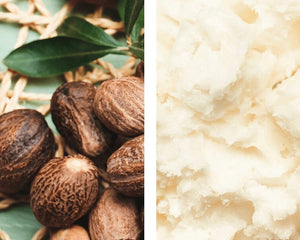
INCI: Butyrospermum Parkii Butter*
What is Shea Butter?
Shea Butter is derived from the seeds of the shea tree, also known as the "butter tree," and is native to West Africa. It is typically obtained through cold-pressing the nuts and has been used for centuries as a moisturizer and emollient suitable for all skin types.
What is Shea Butter used for?
Shea Butter has numerous properties for both skin and hair care. It is a fantastic emollient that helps to heal and regenerate the skin. It also soothes and protects against external aggressors such as the sun, cold weather, wind, and pollution. Shea Butter is rich in omega nutrients and moisturizing phytosterols, as well as antioxidants like vitamins A, E, F, and quercetin, which also have anti-inflammatory effects.
*Ingredient from controlled organic cultivation.
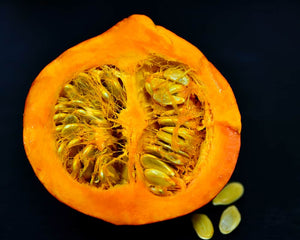
What is Squalene?
Squalene is an oily liquid that originally got its name from being found in shark liver, but today it is extracted 100% naturally from certain vegetable oils such as olive oil (0.6%), peanut oil (0.1%), and pumpkin seed oil (0.35%). Squalene is naturally present in our skin; about 13% of human sebum is squalene (the fatty matter).
Properties of Squalene
Squalene is an ingredient identical to what we have in our skin. It serves as an antioxidant and a powerful moisturizer to prevent transepidermal water loss (TEWL). It leaves the skin very smooth without greasiness and is compatible with all skin types and conditions.
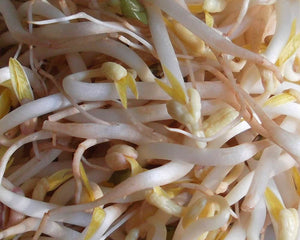
INCI: Glycine Soja Oil
What is Soybean Oil?
Soybean oil is a vegetable oil that is rich in vitamins and derived from the soybean, a plant native to subtropical regions of Southeast Asia.
Properties of Soybean Oil
Soybean oil has moisturizing, nourishing, soothing, and anti-inflammatory properties due to its high content of fatty acids. It contains approximately 48-59% linoleic acid, 17-30% oleic acid, and 4.5-11% linolenic acid. It is also a good source of antioxidants and helps regenerate and firm the skin.

INCI: Helianthus Annuus Seed Oil*
How Sunflower Oil is Obtained
Sunflower oil is obtained from its seeds, usually through cold pressing, followed by decantation and filtration. It is a "green" process that also allows preserving all the properties of the seeds.
Properties of Sunflower Oil
This oil nourishes and has a soothing action thanks to the properties of linoleic acid on irritated skin. It is also an antibacterial and has tissue repair capacity, which makes it optimal for treating acne-prone skin and even reducing the visibility of small marks.
*Ingredient from controlled organic cultivation.

INCI: Helianthus Annuus Seed wax
What is Sunflower Seed Wax?
Sunflower seed wax is a hard wax derived from the seeds of sunflowers. It is used in cosmetics for its skin conditioning properties.
What is Sunflower Seed Wax used for?
Like other waxes, sunflower seed wax is used to stabilize products and give them body. It can also be used as a repairing and soothing agent. It contains essential fatty acids and vitamins A, D, and E.

INCI: Hippophae Rhamnoides Fruit Extract*
What is Sea Buckthorn?
Hippophae rhamnoides fruit extract, commonly known as sea buckthorn, is rich in vitamin C, omega fatty acids, and antioxidants.
Properties of Sea Buckthorn
This extract is renowned for its moisturizing and regenerative properties, helping to improve skin elasticity and combat signs of aging. It’s also used in treatments for burns and wounds thanks to its healing effects.
(*) Ingredient from controlled organic cultivation
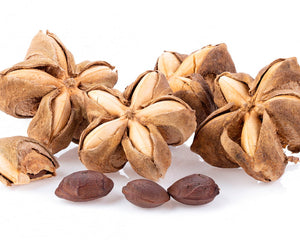
INCI: Plukenetia Volubilis Seed Oil*
What is Sacha Inchi?
Sacha Inchi is an oleaginous plant, cultivated by the Incas for centuries and native to the Colombian and Peruvian Amazon. Its oil is extracted from the seeds by cold pressing.
Properties of Sacha Inchi Oil
Sacha Inchi oil nourishes the skin and helps maintain the integrity of the cell membrane, promoting cell regeneration and increasing skin firmness and elasticity. It contains nourishing fatty acids to reinforce the skin's lipid balance: alpha-linolenic acid (42-49%), linoleic acid (32-38%), and oleic acid (9-14%). It also helps prevent transepidermal water loss (TEWL), increasing skin hydration levels. It contains a high amount of vitamin E and phytosterols. Truly a gift for the skin.
*Ingredient from controlled organic cultivation.
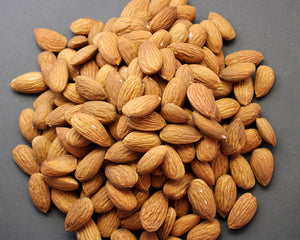
INCI: Prunus Amygdalus Dulcis Oil*
How is Sweet Almond Oil obtained?
Sweet Almond Oil is generally obtained through a cold-pressing process of the fruits of the almond tree, which belongs to the Rosaceae family. The almond tree is native to Central Asia.
Properties of Sweet Almond Oil
Sweet Almond Oil is an extremely nourishing oil for the skin due to its high content of plant-based proteins and fatty acids (around 90%). It deeply penetrates and is quickly absorbed, providing softness while regulating pH, soothing, and regenerating the skin. It is also capable of regulating the skin's water loss and restoring a healthy balance. It is ideal for caring for sensitive and delicate skin, including those prone to atopic conditions or acne.
*Ingredient from controlled organic cultivation.
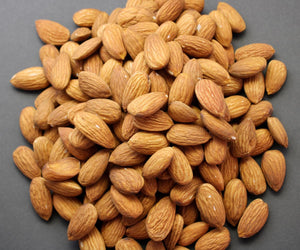
INCI: Prunus Amygdalus Dulcis Oil
How is Sweet Almond Oil obtained?
Sweet almond oil is extracted from the fruit of the Prunus amygdalus dulcis almond tree, which is native to Asia and the Middle East. The oil is usually obtained through a cold-pressing process of the tree's fruits.
Properties of Sweet Almond Oil
Sweet almond oil is an extremely nourishing oil for the skin due to its richness in plant-based proteins and fatty acids (around 90%). It penetrates deeply and is quickly absorbed, providing softness while regulating pH, calming and regenerating the skin. It is also capable of regulating the skin's water loss and restoring a healthy balance. It is ideal for caring for the most sensitive and delicate skin, including those with a tendency to atopy or acne.
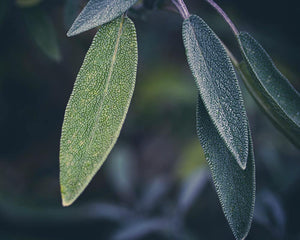
What is Sage?
Sage owes its name (from the Latin "salvare") precisely to its medicinal properties. It is grouped among the xerophytes or xerophilous plants due to its adaptogenic capabilities to live in especially dry environments (xeric environments), self-balancing and reducing the loss of its water reserves through transpiration.
Properties of Sage
Its extract is used to enhance the moisturizing properties of cosmetics thanks to its strengthening action on the skin barrier function and its ability to reduce transepidermal water loss. It also has antiseptic and anti-inflammatory properties.
(*) Ingredient from controlled organic cultivation.
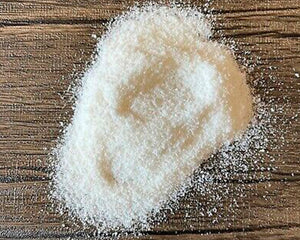
What is Sclerotium Gum?
It is a sugar molecule (polysaccharide) used as a natural thickening and gelling agent; it is a derivative of the fermentation of the Sclerotium genus, a filamentous fungus. It is similar to xanthan gum, which is more commonly used.
Properties of Sclerotium Gum
It is mainly used to improve the sensory properties of cosmetics and their application on the skin. It helps create a gel-like texture. responder de nuevo buscar en la web y preguntar a GPT-4 Indicación GPT-4
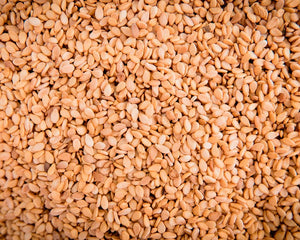
INCI: Sesamum Indicum Seed Oil
What is Sesame?
Sesame oil is extracted from the seeds of the Sesamum indicum plant by cold pressing. Sesame is native to Africa and India. In Ayurvedic medicine, it is used especially for its anti-inflammatory effects.
Properties of Sesame Oil
It is a natural emollient with high amounts of nourishing and moisturizing omega-6 and omega-9 fatty acids (approximately 38% oleic acid and 48% linoleic acid). It has anti-inflammatory, toning, and firming properties; it repairs and regenerates dry skin. It absorbs quickly and leaves the skin feeling soft and smooth.
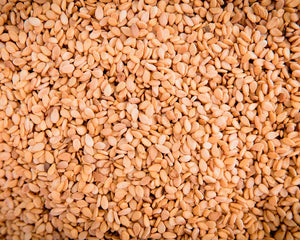
INCI: Sesamum Indicum Seed Oil*
What is Sesame?
Sesame oil is extracted from the seeds of the Sesamum indicum plant by cold pressing. Sesame is native to Africa and India. In Ayurvedic medicine, it is used especially for its anti-inflammatory effect.
Properties of Sesame Oil
It is a natural emollient with high amounts of nourishing and moisturizing omega-6 and omega-9 fatty acids (around 38% oleic acid and 48% linoleic acid). It has anti-inflammatory, toning, and firming properties; it repairs and regenerates dry skin. It is quickly absorbed and provides the skin with a soft and delicate feel.
(*) Ingredient from controlled organic cultivation.

INCI: Sodium Anisate
What is Sodium Anisate?
Sodium Anisate is a sodium salt of anisic acid, a compound that is naturally found in anise. It is used as a cosmetic ingredient due to its preservative properties and its ability to enhance the stability of formulations.
Properties of Sodium Anisate
It acts as a natural preservative, helping to prevent the growth of microorganisms in cosmetic products. Additionally, it is anti-inflammatory and antioxidant.
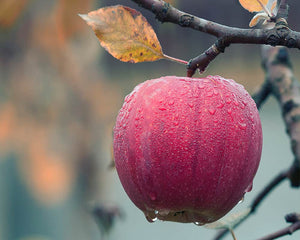
What is Sodium Benzoate?
Sodium Benzoate is the sodium salt of benzoic acid, which is naturally found in some fruits. It is used in both food and cosmetics to preserve products.
What is Sodium Benzoate used for?
This ingredient is used to extend the shelf life of cosmetic products. It works alongside other similar acting ingredients like potassium sorbate to broaden the spectrum of protection. It is harmless, skin-compatible, and has a low environmental impact.
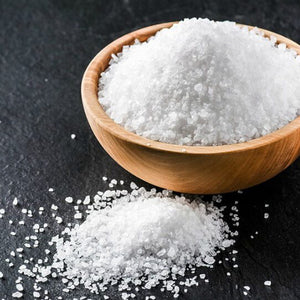
INCI: Sodium Chloride
What is Sodium Chloride?
Sodium Chloride, commonly known as salt or table salt, is a chemical compound made up of sodium and chlorine.
Properties of Sodium Chloride
In the cosmetic field, it is primarily used as a thickening agent, stabilizer, and natural preservative. It also helps maintain the pH balance in formulations, which is crucial for the product's effectiveness and safety. Additionally, it can be used to adjust the viscosity of products and improve their texture.
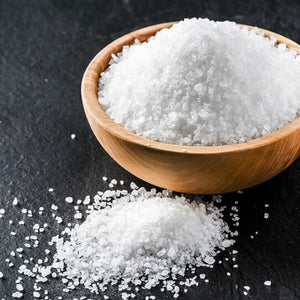
INCI: Sodium Hydroxide
Properties of Sodium Hydroxide
Sodium Hydroxide is primarily used as a pH regulator and an acidity adjusting agent in cosmetic formulations.
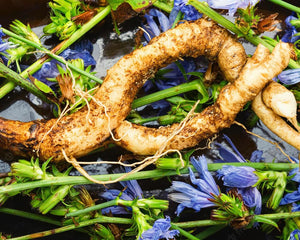
What is Sodium Levulinate?
Sodium Levulinate is the salt of Levulinic Acid, a synthetic organic substance that helps condition and soften the skin. It is often used as a preservative instead of benzoic or sorbic acids. It is 100% natural and obtained from vegetable starch and inulin.
What is Sodium Levulinate used for?
Sodium Levulinate is used as a preservative in cosmetic products due to its antimicrobial action. It also helps condition and soften the skin.
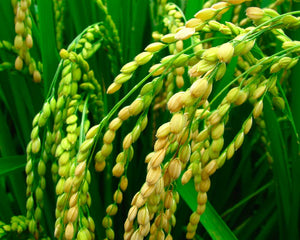
What is Sodium Phytate?
Sodium Phytate is the sodium salt of phytic acid, which is naturally obtained from wheat, corn, and rice.
What is Sodium Phytate used for?
It is an auxiliary ingredient used as a chelating agent to maintain the stability of a product over time. It neutralizes the metallic ions in the formula that come from water and could contribute to altering some properties of the cosmetic.
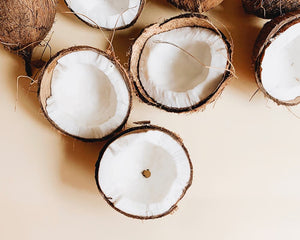
INCI: Sodium Stearoyl glutamate
What is Sodium Stearoyl glutamate?
It is a sodium salt of glutamic acid created from vegetable oils such as coconut oil.
What is Sodium Stearoyl glutamate used for?
It hydrates, cleanses, and conditions the skin, significantly improving the application of the product.
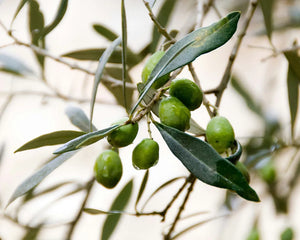
INCI: Squalane
What is Squalane?
Squalane is a moisturizing compound derived from squalene, which in its vegan form is found in olive oil or sugarcane. In cosmetics, it is used in its saturated form (squalane) to improve product absorption and stability.
Properties of Squalane
It acts as an emollient that mimics the skin’s natural sebum, providing intense hydration, enhancing elasticity, and leaving the skin softer and more supple. It also has antioxidant properties and can help protect the skin from environmental aggressors.
Differences between Squalane and Squalene
Squalene is an unsaturated, reactive hydrocarbon, whereas squalane is its saturated form, which is more stable and less prone to oxidation. Squalene is found in some natural oils, while squalane is more commonly used as an emollient and moisturizer in cosmetic products due to its safety and effectiveness.
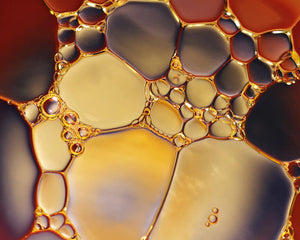
What is Sucrose Polysterate?
Sucrose Polysterate is an emulsifier and emollient that is obtained through the esterification of vegetable oils and sugars.
What is Sucrose Polysterate used for?
Sucrose Polysterate improves the viscosity of cosmetic formulas, leaving the skin hydrated, fresh, and very smooth. It helps to create a pleasant texture and enhances the overall sensory experience of the product.
T

INCI: Terpineol**
What is Terpineol?
Terpineol is an organic compound found in various plants, especially in essential oils from pine and some flowers. It is known for its pleasant aroma and is commonly used in the fragrance and cosmetic industries. In cosmetics, terpineol is valued for its aromatic properties and skin benefits.
Properties of Terpineol
-
Anti-inflammatory: Terpineol may help reduce inflammation, making it suitable for products aimed at irritated or sensitive skin.
-
Antioxidant: It helps protect the skin from free radical damage, assisting in the prevention of premature aging.
-
Antimicrobial: Terpineol possesses properties that can help fight bacteria and fungi, making it useful in skincare products for blemish-prone skin.
-
Fragrance agent: Its fresh, floral scent makes it a popular ingredient in fragrance products and air fresheners.
(**) Derived from natural essential oils
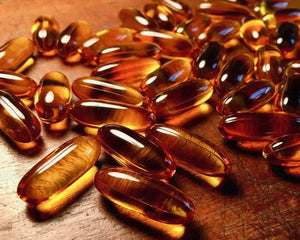
INCI: Tocopheryl Acetate
What is Tocopheryl Acetate
Tocopheryl acetate is a derivative of tocopherol (vitamin E). This molecule is obtained by esterifying tocopherol with acetic acid. Tocopherols are found naturally in vegetable oils and grains, being especially abundant in wheat germ, soybean oil and sunflower oil.
Properties of Tocopheryl Acetate
An ingredient widely used in cosmetics, it has powerful antioxidant properties and has softening, emollient and conditioning effects that improve the texture and appearance of the skin. On the other hand, it has an anti-inflammatory action that makes it useful for calming skin irritations and redness.
V
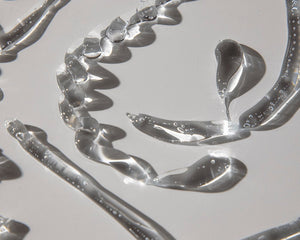
INCI: Glycerin*
What is Vegan Glycerin?
This natural moisturizing ingredient is also present in the outermost layer of our skin. Derived from coconut oil or soy, it is one of the most recognized humectants. It is obtained through the hydrolysis of fats, which releases esters and glycerin.
Properties of Vegan Glycerin
Glycerin is a completely safe and effective molecule due to its biocompatibility with our skin, as glycerol is naturally found in it. It softens and smoothens the skin. As a humectant, it increases the skin's ability to retain water; more glycerin means more water in the skin and greater hydration. Its properties also include maintaining the skin barrier and protecting against irritations.
(*) Ingredient from controlled organic cultivation.
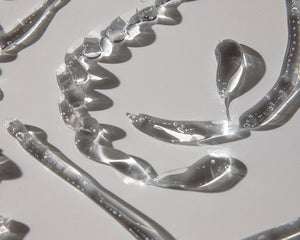
What is Vegan Glycerin?
This natural moisturizing ingredient is also present in the outermost layer of our skin. Derived from coconut oil or soy, it is one of the most recognized humectants. It is obtained through the hydrolysis of fats, which releases esters and glycerin.
Properties of Vegan Glycerin
Glycerin is a completely safe and effective molecule due to its biocompatibility with our skin, as glycerol is naturally found in it. It softens and smoothens the skin. As a humectant, it increases the skin's ability to retain water; more glycerin means more water in the skin and greater hydration. Among its properties, it also helps maintain the skin barrier and protects against irritations.
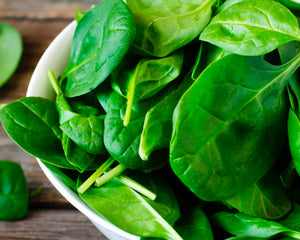
INCI: Phytonadione Epoxide
What is Vitamin K1 Epoxide?
Phytonadione Epoxide, also known as vitamin K1 epoxide, is a compound derived from vitamin K. This active ingredient is obtained from natural sources such as green leafy vegetables. It is used in the cosmetic industry mainly for its beneficial properties for the skin.
Properties of Vitamin K1 Epoxide
Among its main properties, vitamin K1 helps reduce inflammation and redness of the skin, making it useful in products for sensitive or irritated skin. It has been shown to help reduce the appearance of dark circles and dark spots under the eyes by improving blood microcirculation. Additionally, it promotes cellular regeneration and acts as an antioxidant, protecting the skin from damage caused by free radicals and environmental stress. It also contributes to improving skin elasticity and firmness, making it beneficial in anti-aging products.
Vitamin K1 epoxide is commonly found in eye creams, anti-aging products, brightening serums, and treatments for sensitive skin.

INCI: Sodium Hyaluronate
What are Hyaluronic Acid and Sodium Hyaluronate?Hyaluronic acid (HA) is naturally found in the skin and is a powerful humectant with great water-retaining capacity, up to 1000 times its own weight. Just one gram of HA could retain up to 6 liters of water!
HA is a polymer, a large molecule composed of smaller repeating units; the more subunits, the higher its molecular weight. Derived from hyaluronic acid, sodium hyaluronate is a salt form of the acid with practically identical properties. In fact, it dissociates into a molecule of hyaluronic acid and a sodium atom in solution.
It has the advantage of being more stable and less prone to oxidation than the acid. Additionally, being smaller in size allows for easier absorption.
Properties of Sodium HyaluronateSodium hyaluronate attracts and binds water, thus hydrating the skin, reinforcing its barrier function, and making the skin more elastic and resistant to external aggressions.
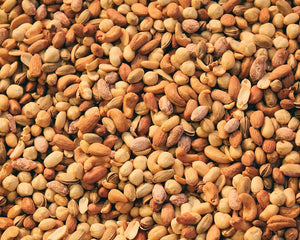
What is Tocopherol?
Tocopherol or vitamin E is naturally extracted directly from vegetable oils. It is naturally present in the skin, but depletes over time and needs to be supplemented.
Properties of Vitamin E
It is a very important antioxidant. It protects the skin from oxidative damage, delaying premature aging, while acting as a filter against damage from UV solar radiation exposure. It also conditions the skin.
W
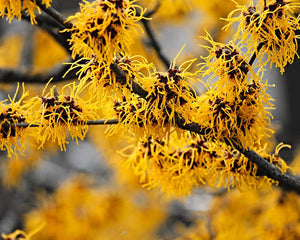
INCI: Hamamelis Virginiana (Witch Hazel) Leaf Extract
What is Witch Hazel?
Witch Hazel is a genus of four different species of plants in the Hamamelidaceae family, which can be found in North America, Japan, and China. The extract comes from the leaves of the tree.
Properties of Witch Hazel
It is an active ingredient widely used for its antibacterial properties thanks to gallic acid. It also contains tannins with good anti-inflammatory, soothing, and astringent properties. Additionally, it promotes the healing of small wounds and helps reduce itching. Its use is recommended for skin with eczema, dermatitis, and acne.

INCI: Aqua
What type of water is used in cosmetics?
In cosmetics, "purified" water is used, which is chemically pure and undergoes filtration or processing to remove all types of impurities, including minerals, chemicals, bacteria, fungi, etc. It is deionized water, completely stripped of ions, and not distilled.
What is the purpose of water in cosmetics?
Water is used as the main solvent in cosmetics due to its properties and affinity with the skin. However, when a cosmetic product is exposed to air after its initial use, certain microorganisms, mainly bacteria, can proliferate in the water and alter the shelf life of the product. This is why the use of preservatives is necessary to maintain the properties of the product intact from its opening and throughout the indicated time period, as indicated by the Period After Opening (PAO) symbol on the label.
X

What is Xanthan Gum?
Xanthan Gum is a natural polysaccharide derived from the fermentation of corn starch.
Properties of Xanthan Gum
Xanthan Gum is a 100% natural ingredient that serves as an emulsion stabilizer, thickener, and improves the texture and sensory experience of cosmetic products.
Y
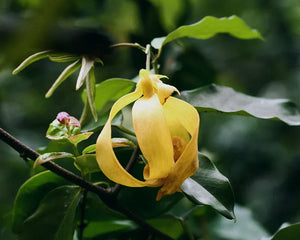
INCI: Cananga Odorata Oil/Extract**
What is Ylang-ylang?
The oil or extract of Cananga odorata, commonly known as ylang-ylang, is renowned for its sweet, floral scent.
Properties of Ylang-ylang
This essential oil has relaxing and antidepressant properties, and is often used in aromatherapy to reduce anxiety and stress. In cosmetics, it is valued for its moisturizing and balancing effects, helping to regulate sebum production in both skin and hair.
(**) Derived from natural essential oils




